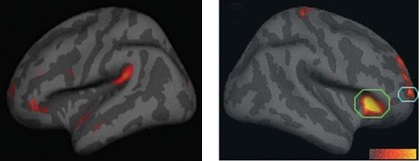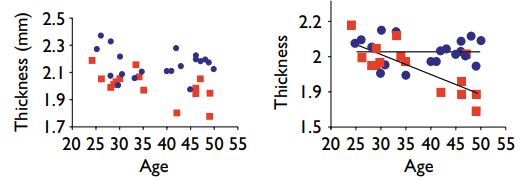Meditation experience is associated with increased cortical thickness
These data provide the first structural evidence for experience-dependent cortical plasticity associated with meditation practice. Brain regions associated with attention, interoception and sensory processing were thicker in meditation participants than matched controls, including the prefrontal cortex and right anterior insula.

This statistical map depicts between-group differences in thickness at each point on the cortical surface.
Between-group differences in prefrontal cortical thickness were most pronounced in older participants, suggesting that meditation might offset age-related cortical thinning.

In these graphs, the mean cortical thickness of each participant in the region of the insula (on the left) and BA 9/10 (on the right) plotted versus age. Meditators are represented by blue circles and control participants by red squares. Note that meditators were able to keep their cortical thickness throughout their lives, while the control group faced a decrease in these regions.
Alphalearning has seen over the years, through its unique approach in Neurofeedback and Brain training, that the control and balance of the brain waves are the key to the resolution of various dysfunctions related to the bioelectric field of the brain. Dyslexia and ADHD, disorders resulting from birth problems, solution of fibromyalgia and reduction of symptoms related to autism spectrum are a few examples, among many others.
Learn how to achieve these results through the Alphalearning International course
